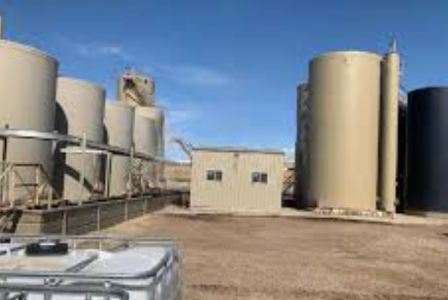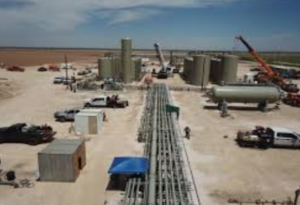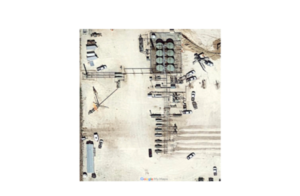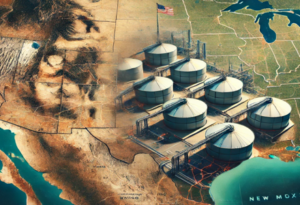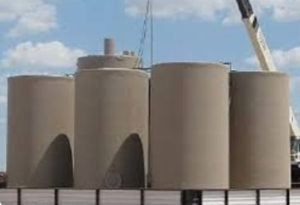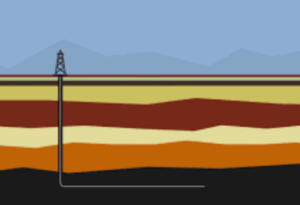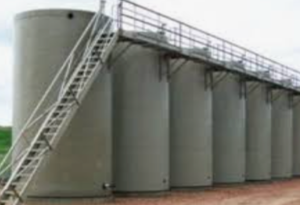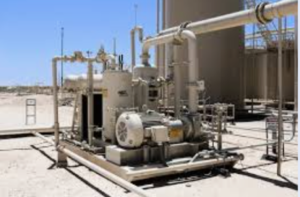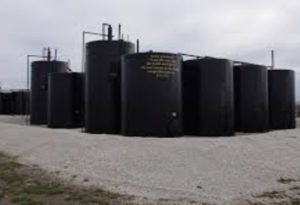An API 12F tank refers to a welded steel tank designed and fabricated in accordance with the specifications outlined in the American Petroleum Institute (API) Standard 12F. The API 12F standard provides guidelines for the construction and maintenance of aboveground storage tanks used for the storage of crude oil and other liquids. These tanks are commonly used in the oil and gas industry for onshore storage applications.
Here are key features and considerations associated with API 12F tanks:
- Design and Construction:
- API 12F tanks are typically constructed using welded steel and are designed to be aboveground storage tanks. The standard outlines specific design criteria, materials, and welding procedures to ensure the structural integrity and safety of the tanks.
- Size and Capacity:
- API 12F tanks come in various sizes and capacities, ranging from a few hundred barrels to several thousand barrels. The specific size and capacity depend on the requirements of the storage application and the volume of liquid to be stored.
- Shape:
- These tanks are often cylindrical in shape, with a vertical orientation. The cylindrical design helps distribute the load evenly and allows for efficient storage of liquids.
- Installation:
- API 12F tanks are designed for easy installation and are often transported to the site in sections for field assembly. They are suitable for use in a variety of environments, including oil fields and other onshore locations.
- Venting and Breathing:
- The standard includes specifications for venting systems to prevent overpressure or vacuum conditions within the tank. Proper venting is crucial for safety and helps maintain the structural integrity of the tank.
- Painting and Coating:
- API 12F tanks are typically painted or coated to protect the steel from corrosion. The standard provides guidelines for the application of protective coatings to ensure the longevity of the tank.
- Accessories:
- Various accessories, such as ladders, platforms, and walkways, may be included based on the requirements of the tank’s location and its intended use. These accessories facilitate access for maintenance and inspection.
- Testing and Inspection:
- The API 12F standard outlines procedures for testing and inspecting the tanks during and after fabrication. This includes non-destructive testing (NDT) methods to ensure the quality of welds and the structural soundness of the tank.
It’s important to note that while API 12F tanks are commonly used, other API standards also exist for aboveground storage tanks, such as API 650 for larger tanks and API 620 for tanks with higher pressure requirements.
When selecting and installing an API 12F tank, it’s crucial to adhere to the specific guidelines outlined in the standard, ensuring that the tank is designed, fabricated, and maintained in a manner that meets industry standards and regulatory requirements.
API 12F tanks typically require a proper foundation or tank base to provide stability, support, and prevent environmental issues. The tank base serves several important functions:
- Stability:
- A well-designed tank base provides a stable foundation for the API 12F tank. Stability is crucial to prevent tilting, settlement, or other issues that could compromise the structural integrity of the tank.
- Load Distribution:
- The tank base helps distribute the load of the tank and its contents evenly to prevent localized stress points. Proper load distribution is essential to ensure that the tank maintains its shape and integrity over time.
- Prevention of Settlement:
- Settlement can occur over time due to factors such as soil consolidation or inadequate foundation design. A robust tank base is designed to minimize settlement and prevent uneven settling that could affect the tank’s stability.
- Environmental Protection:
- The tank base helps prevent environmental issues by creating a barrier between the tank and the ground. This is particularly important for preventing soil contamination in case of leaks or spills.
- Erosion Control:
- In areas prone to soil erosion, the tank base can include erosion control measures to stabilize the soil and prevent erosion around the tank.
- Facilitation of Inspections and Maintenance:
- A properly constructed tank base facilitates routine inspections and maintenance activities. It provides a safe and accessible platform for personnel to inspect the tank and perform necessary maintenance tasks.
- Compatibility with Environmental Regulations:
- Environmental regulations often specify requirements for tank foundations to prevent soil and groundwater contamination. Adhering to these regulations is crucial for compliance and minimizing the environmental impact of the tank.
When designing the tank base for an API 12F tank, engineers consider factors such as soil characteristics, local environmental conditions, and the size and weight of the tank. The design must adhere to industry standards and regulations to ensure the safe and reliable operation of the tank.
It’s important to note that the specific design and construction requirements for the tank base may vary based on local regulations and site-specific conditions. Consulting with a qualified engineer or tank design professional is essential to ensure that the tank base meets all necessary requirements for safety, stability, and environmental protection.
Tank Base Posts

